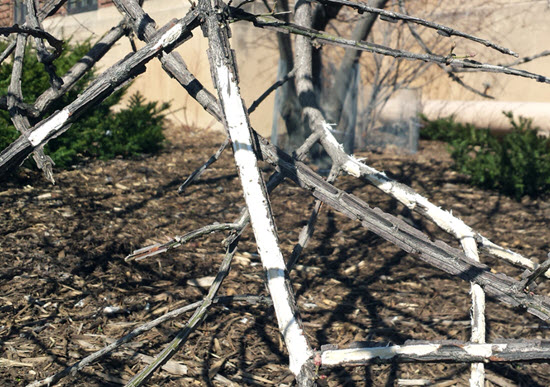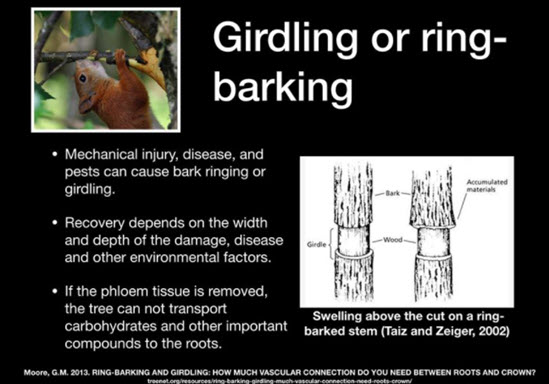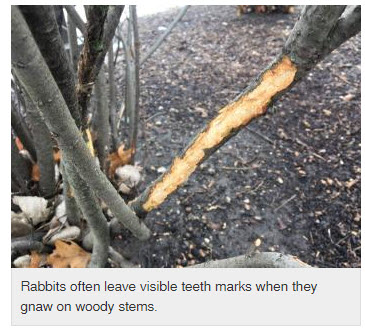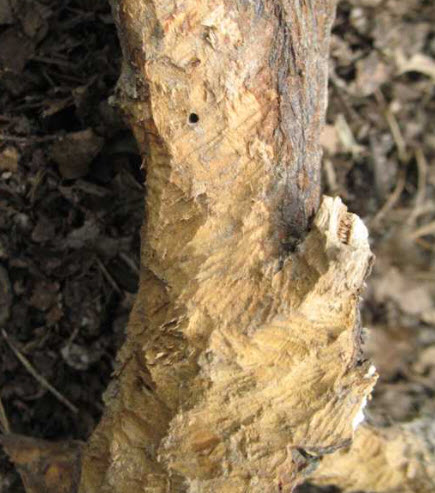Click below to listen to my 2 min. Garden Bite radio show: Assessing wildlife damage on plants
Audio PlayerThe weather was cold, windy, snowy, rainy and then some sun came out. You may have also gone out and took a look at your small trees, shrubs and even perennials. Assessing wildlife damage.

Rabbits, voles and squirrels can all strip bark. They may also leave small tooth marks on the wood. University of Minnesota Extension wildlife specialist, John Loegering, says if the bark is stripped all the way around a branch, that branch will probably not survive. Prune off the damaged part.

The healthy portion below it is still likely to produce new leaves and shoots from the buds. When a small mammal chews on a branch or trunk, they “girdle” it. Girdling partially cuts off the transport of water and nutrients from the roots to the canopy. Girdled branches likely won’t survive for long. Bite wounds also allow pathogens into the wood, introducing diseases like black rot.

If the tooth marks look like a scoop from a spoon, they are likely from a rabbit. If the mark looks like it was scraped with the tines of a fork, it is likely from a vole. There’s really not much else you can do.


As we talked about last week, it is unnecessary to apply wound dressing. It just costs money and does nothing. Adding fertilizer will only help if the soil actually needs it, which means you may want to get a soil test. And excess nitrogen can reduce fruit load in favor of vegetative growth and leach out of the soil into our lakes and rivers.
Sometimes you give the shrub/tree time after you’ve pruned it. Sometimes you just have to cut your loss.
